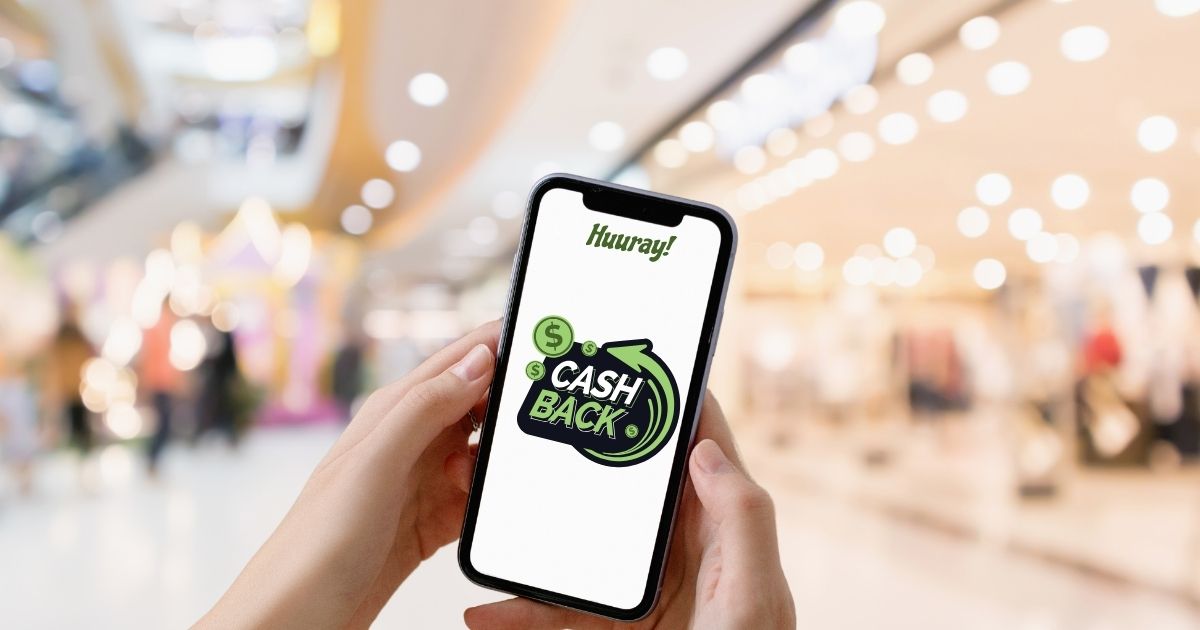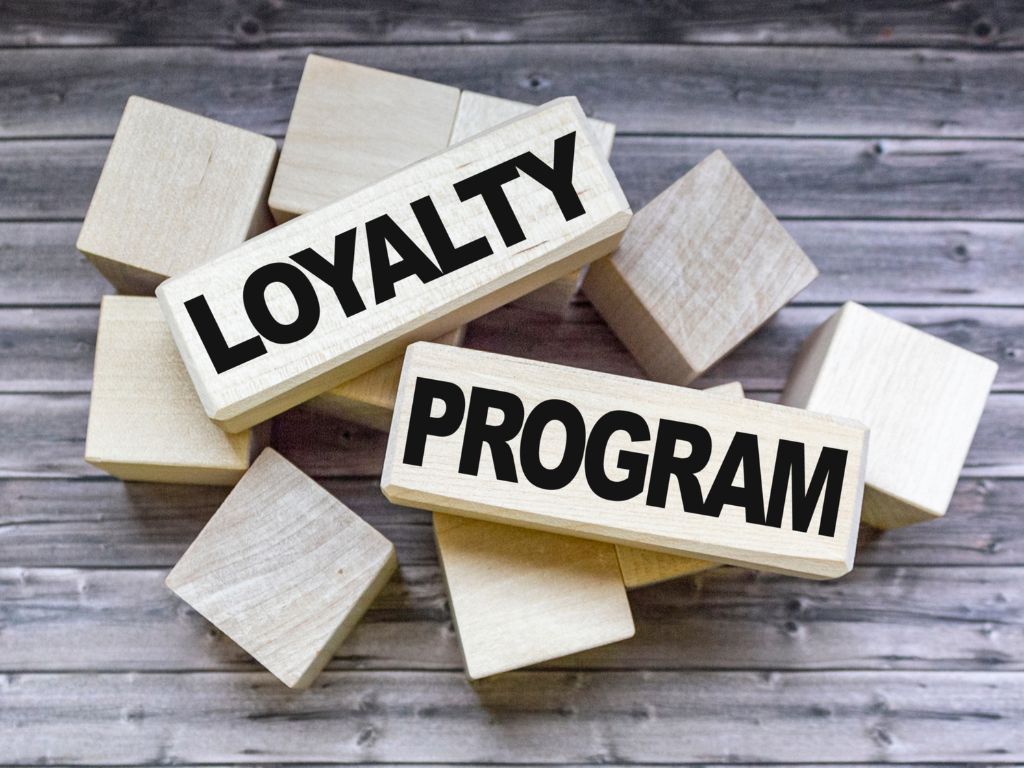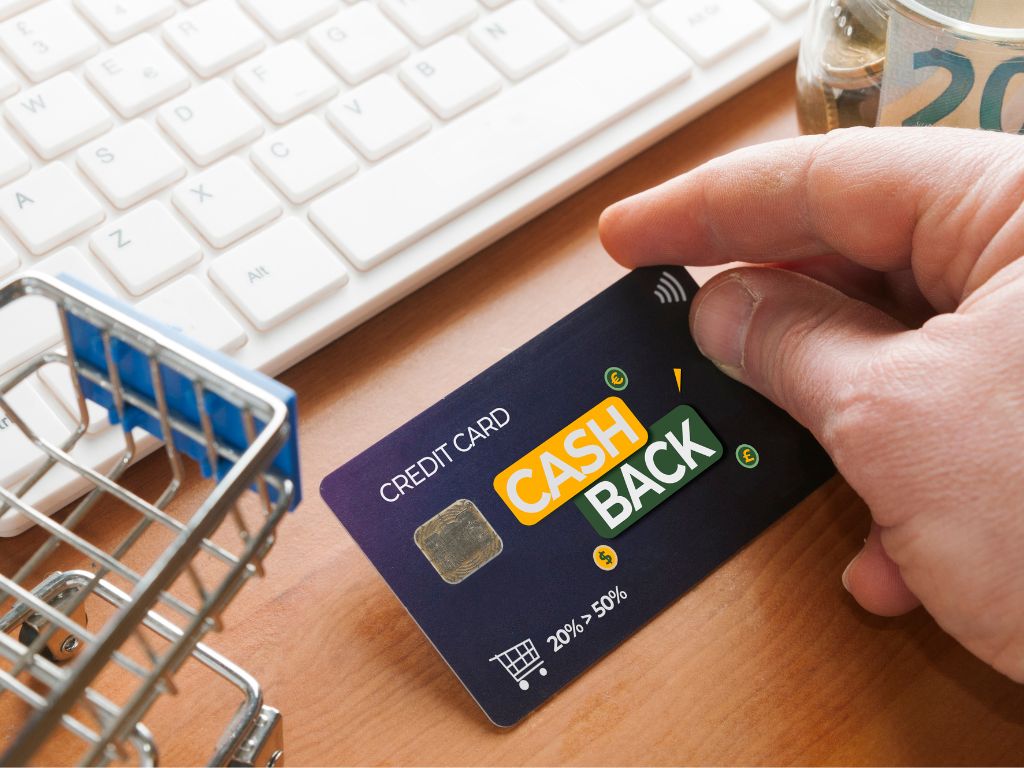Cashback Reward Program: Discover the Power of Rewards!


by Ummul Qura Danish
April 19, 2024
Step into the realm of Cashback Reward Programs, where every purchase becomes an opportunity for savings and benefits. In today’s bustling marketplace, harnessing the potential of your spending is essential, and these programs provide a seamless path to do just that. The Cashback Reward Program invites you to explore a universe of possibilities, where each transaction not only fulfills your needs but also earns you valuable rewards. Plus, with the option to redeem your rewards for gift cards, your shopping journey becomes even more rewarding. Join us as we delve into the essence of rewards and how they can elevate your shopping experience.
Jump to section
What are cashback rewards?
Cashback rewards allow consumers to earn back a percentage of their purchase amount as a reward, providing savings or extra value. These rewards can be in the form of cash, points, or credits that can be used towards future purchases. By participating in a cashback reward program, consumers can turn their everyday expenses into something beneficial, accumulating more rewards with increased spending. One advantage of cashback rewards is their flexibility, as they can generally be used anywhere, unlike traditional discounts or coupons. Overall, cashback rewards provide an opportunity for consumers to make the most of their spending and maximize their shopping experience.
Related: Huuray
How does the cashback reward program work?
The Cashback Reward Program operates on a simple premise as you make purchases using a designated credit card or through participating merchants, a percentage of the purchase amount is returned to you as cashback. This cashback can accumulate over time and is typically credited to your account periodically, offering a tangible benefit for your spending. The program may have varying terms and conditions, such as earning rates for different categories of spending or limits on cashback earnings. Overall, it’s a straightforward way to earn rewards on everyday purchases, providing an incentive to continue using the designated card or shopping with participating merchants.
Advantages of the cashback reward program
- Tangible Benefits: Participants enjoy tangible rewards in the form of cashback on their everyday spending, providing a clear incentive to use the program.
- Incentivized Spending: The cashback reward program incentivizes participants to spend by offering them monetary rewards, thereby fostering loyalty to the program and its affiliated merchants.
- Flexible Redemption Options: Cashback rewards offer flexibility in redemption, allowing participants to choose how they want to use their rewards, whether as statement credits, bank deposits, or gift cards.
- No Expiry Date: Unlike some other reward programs, cashback rewards typically do not expire as long as the participant’s account remains active, ensuring that rewards can accumulate over time.
- Easy Accessibility: The cashback reward program provides a straightforward and easily accessible way for consumers to earn rewards for their spending, enhancing their overall financial experience.
- Transparent Rewards System: Participants appreciate the transparency of cashback rewards, as they can easily track their earnings and understand how much they’re earning with each purchase.
- Additional Bonuses: Some cashback programs offer additional bonuses or incentives, such as sign-up bonuses, referral bonuses, or bonus cashback categories, further enhancing the value of participation.
- No Restrictions on Spending Categories: Cashback rewards often come with no restrictions on spending categories, allowing participants to earn rewards on all types of purchases, from groceries to gas to dining out.
- Opportunity for Passive Income: Cashback rewards provide an opportunity for participants to earn passive income simply by using their credit card or participating in the program, making it a valuable addition to their financial strategy.
Examples of the best cashback rewards program
Cashback reward programs are not limited to some companies; various businesses across different industries offer them to incentivize customer spending and loyalty. Here are some examples of businesses that commonly offer cashback reward programs:
Credit Card Companies:
As mentioned earlier, credit card companies like Chase, American Express, and Discover often provide cashback rewards as a perk for using their cards for purchases.
Retailers:
Many retail stores, both online and brick-and-mortar, offer cashback rewards to encourage repeat purchases. Examples include Amazon, Walmart, Target, and Best Buy.
Banks:
Some banks offer cashback rewards on debit card purchases or as a perk for using specific banking products. For instance, certain checking accounts may offer cashback rewards on qualifying purchases or bill payments.
Online Marketplaces:
Online marketplaces like Rakuten (formerly known as Ebates) provide cashback rewards to users who shop through their platform at partner retailers.
Travel Websites:
Travel booking websites such as Expedia and Booking.com may offer cashback rewards on hotel bookings, flight purchases, or vacation packages.
Gas Stations:
Some gas stations offer cashback rewards programs to incentivize fuel purchases. Customers may earn cashback or discounts on future gas purchases by participating in these programs.
Grocery Stores:
Certain grocery chains offer cashback rewards to customers who enroll in their loyalty programs or use designated credit cards for grocery purchases.
Online Payment Platforms:
Payment platforms like PayPal and Venmo may offer cashback rewards for using their services for transactions, especially on eligible purchases or when using linked cards.
These are just a few examples of businesses that offer cashback reward programs. Many other industries, including telecommunications, insurance, and hospitality, also utilize cashback rewards as part of their customer acquisition and retention strategies.

Send yourself a reward
Cashback rewards benefits for consumers

Earn Money on Purchases:
Cashback rewards allow consumers to earn a percentage of their spending back as cash, effectively reducing the overall cost of their purchases.
Flexible Redemption:
Consumers can often redeem their cashback rewards in various ways, such as statement credits, direct deposits to their bank accounts, or gift cards, providing flexibility in how they utilize their earnings.
Savings on Everyday Expenses:
By earning cashback on everyday purchases like groceries, gas, and utilities, consumers can accumulate savings over time, making their budget stretch further.
No Additional Costs:
Many cashback programs have no enrollment fees or annual fees, allowing consumers to enjoy the benefits of earning cashback without any additional financial burden.
Tailored Rewards:
Some cashback programs offer personalized rewards based on spending habits, providing consumers with targeted offers and incentives that align with their preferences.
Boosts Purchasing Power:
Cashback rewards effectively increase consumers’ purchasing power by providing them with additional funds that can be used for future purchases or savings goals.
Incentive for Responsible Spending:
Cashback rewards can incentivize responsible spending habits, as consumers may be motivated to make purchases using their cashback-earning methods to maximize their rewards.
Encourages Brand Loyalty:
Cashback programs offered by specific retailers or credit card issuers can encourage consumers to remain loyal to those brands, as they seek to maximize their cashback earnings.
Supplementary Benefits:
Some cashback programs offer additional perks such as travel insurance, extended warranties, or access to exclusive discounts and promotions, further enhancing the value proposition for consumers.
Overall, cashback rewards provide consumers with tangible financial benefits, incentivizing spending while simultaneously offering opportunities for savings and rewards accumulation.
Cash-back rewards benefit retailers

Increase Customer Spending:
Cash-back rewards incentivize consumers to make purchases by offering them a percentage of their spending back as cash. This incentive can encourage customers to spend more or make additional purchases to maximize their cashback earnings.
Drive Repeat Purchases:
Cash-back rewards can help build customer loyalty programs and encourage repeat business. Customers who participate in cash-back programs may be more likely to return to the retailer to earn rewards on future purchases.
Attract New Customers:
Cash-back rewards programs can be used as a marketing tool to attract new customers. Retailers can promote their cash-back offers to entice shoppers who are interested in earning rewards while making purchases.
Competitive Advantage:
Offering a cash-back rewards program can give retailers a competitive edge in the market. Customers may choose to shop at a retailer that offers cash-back rewards over competitors that do not have similar programs.
Data Collection and Insights:
Cash-back rewards programs allow retailers to collect valuable data on customer spending habits and preferences. This data can be used to better understand customer behavior, personalize marketing efforts, and improve overall customer experience.
Partnerships and Co-Branding Opportunities:
Retailers can collaborate with banks, credit card issuers, or other businesses to offer cash-back rewards programs. These partnerships can expand the reach of the program and attract a broader customer base.
Increase Sales during Promotional Periods:
Retailers can leverage cash-back rewards programs during promotional periods or sales events to drive additional sales. The promise of earning cashback on discounted or promotional items can incentivize customers to make purchases during these periods.
Encourage Customer Engagement:
Cash-back rewards programs provide retailers with a platform to engage with customers and communicate promotional offers, discounts, and exclusive deals. This engagement can help keep the retailer top-of-mind for customers and encourage them to continue shopping.
Build Brand Loyalty:
By rewarding customers for their purchases, cash-back rewards programs can foster a sense of loyalty and goodwill towards the retailer. Customers who feel appreciated and valued are more likely to continue shopping with the retailer in the future.
Overall, cash-back rewards programs can be a valuable tool for retailers to drive sales, attract customers, and build long-term relationships with their audience.
Loyalty Program for Cashback Rewards

Creating loyalty programs for a cashback reward program can enhance customer engagement and retention. Here’s how it typically works and some key benefits:
- Tiered Membership Levels: Offer different tiers of membership based on spending levels or frequency of purchases. Higher tiers can unlock additional benefits and rewards.
- Points Accumulation: Customers earn points not only through purchases but also through various engagement activities like referrals, social media shares, or completing surveys.
- Redeemable Rewards: Allow customers to redeem their accumulated points for cashback rewards, discounts on future purchases, free products, or exclusive perks.
- Personalized Offers: Tailor rewards and offers based on customer preferences, purchase history, and behavior to make the program more relevant and enticing.
- Special Events and Promotions: Host exclusive events or promotions for loyalty program members, such as early access to sales, VIP shopping days, or double points weekends.
- Member Communications: Keep members informed about their points balance, special offers, and upcoming events through personalized emails, app notifications, or SMS alerts.
- Referral Program: Incentivize existing members to refer friends and family by offering bonus points or cashback rewards for successful referrals.
- Anniversary Rewards: Recognize and reward members on their membership anniversaries with bonus points, exclusive discounts, or gifts.
Let’s have a chat
What are rebates?

Rebates are incentives offered by manufacturers or retailers to encourage customers to purchase specific products. When a customer buys a product eligible for a rebate, they can submit a claim, usually by providing proof of purchase, such as a receipt or UPC. Once the claim is verified, the customer receives a partial refund of the purchase price, typically in the form of a check, prepaid card, or credit to their account.
Rebates are often used as a marketing tool to stimulate sales, clear inventory, or promote new products. They can vary in amount and duration and may be offered as instant rebates at the time of purchase or as mail-in rebates that require the customer to submit a claim after the purchase. Rebates can apply to a wide range of products, including electronics, appliances, automotive parts, and consumer goods.
Key characteristics of rebates include:
- Partial Refund: Rebates offer customers a partial refund of the purchase price, typically a percentage of the total cost or a fixed amount.
- Submission Process: Customers must follow specific instructions to claim the rebate, which often involves submitting proof of purchase and completing a rebate form.
- Processing Time: Rebates may take several weeks or months to process, depending on the terms and conditions set by the manufacturer or retailer.
- Expiration Date: Rebate offers usually have an expiration date, requiring customers to submit their claims within a specified time frame to be eligible for the rebate.
- Terms and Conditions: Rebate offers may have restrictions and conditions, such as limits on the number of rebates per household, eligible purchase dates, and geographic availability.
Rebates can be an effective way for customers to save money on purchases, but they require careful attention to the terms and submission process to ensure eligibility and timely reimbursement. Additionally, businesses use rebates strategically to drive sales and customer acquisition while managing costs and inventory levels.
Conclusion
In conclusion, cashback rewards, loyalty programs, and credit cards incentives offer a compelling proposition for both consumers and retailers alike. By leveraging cashback bonus and loyalty programs, consumers can maximize their savings and purchasing power while enjoying personalized rewards and exclusive benefits. Retailers, on the other hand, can drive sales, attract customers, and foster long-term loyalty through targeted marketing efforts and strategic partnerships with financial institutions. With the widespread availability of cashback rewards and the convenience of credit card usage, both consumers and retailers stand to benefit from these mutually rewarding programs.



Let’s have a chat
Frequently asked questions
Rebates are incentives offered by manufacturers or retailers, where customers can submit a claim after purchasing eligible products to receive a partial refund of the purchase price, typically in the form of a check, prepaid card, or account credit.
A loyalty program for cashback rewards typically includes tiered membership levels, points accumulation through purchases and engagement activities, redeemable rewards, personalized offers, special events and promotions, member communications, referral programs, and anniversary rewards to enhance customer engagement and retention.
Cashback rewards benefit retailers by increasing customer spending, driving repeat purchases, attracting new customers, collecting valuable data insights, creating partnerships and co-branding opportunities, increasing sales during promotional periods, encouraging customer engagement, and building brand loyalty.
Cashback rewards allow consumers to earn money on purchases, enjoy flexible redemption options, save on everyday expenses, incur no additional costs, receive tailored rewards, boost purchasing power, incentivize responsible spending, encourage brand loyalty, and may provide supplementary benefits.
Cashback reward programs offer tangible benefits, incentivize spending, provide flexible redemption options, have no expiry date, are easily accessible, offer transparent rewards systems, and may include additional bonuses or perks.
Cashback reward programs typically operate by offering a designated credit card or through participating merchants, where a percentage of the purchase amount is returned to the consumer as cashback, which accumulates over time and is credited periodically.
Cashback reward programs allow consumers to earn back a percentage of their purchases, providing savings and benefits in the form of cash, points, or credits that can be used towards future purchases.